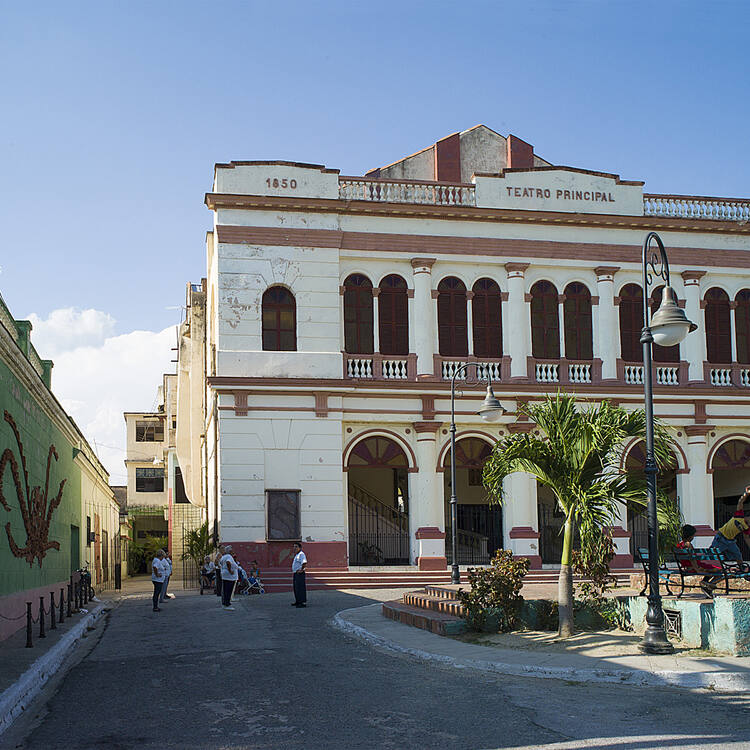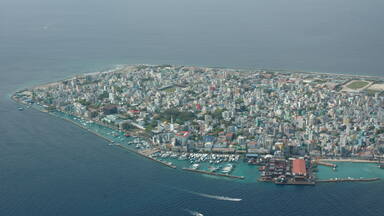Historic Centre of Camagüey
Historic Centre of Camagüey
One of the first seven villages founded by the Spaniards in Cuba, Camagüey played a prominent role as the urban centre of an inland territory dedicated to cattle breeding and the sugar industry. Settled in its current location in 1528, the town developed on the basis of an irregular urban pattern that contains a system of large and minor squares, serpentine streets, alleys and irregular urban blocks, highly exceptional for Latin American colonial towns located in plain territories. The 54 ha Historic Centre of Camagüey constitutes an exceptional example of a traditional urban settlement relatively isolated from main trade routes. The Spanish colonizers followed medieval European influences in terms of urban layout and traditional construction techniques brought to the Americas by their masons and construction masters. The property reflects the influence of numerous styles through the ages: neoclassical, eclectic, Art Deco, Neo-colonial as well as some Art Nouveau and rationalism.
Description is available under license CC-BY-SA IGO 3.0
Centre historique de Camagüey
Camagüey - un des sept premiers villages fondés par les Espagnols à Cuba - a joué un rôle de premier plan en tant que centre urbain d’un territoire consacré à l’élevage et à l’industrie sucrière. Installée à son emplacement actuel en 1528, la ville s’est développée sur la base d’un tracé urbain irrégulier qui comprend un système de places et de placettes, de rues et de ruelles sinueuses et de pâtés de maisons irréguliers, très peu courant dans l’Amérique latine coloniale. Le centre historique de Camagüey, couvrant 54 ha, constitue un exemple exceptionnel d’installation urbaine traditionnelle relativement isolée des routes principales. Les colons espagnols étaient soumis aux influences urbaines médiévales européennes, visibles dans le tracé urbain, ainsi qu’aux techniques traditionnelles de construction, apportées aux Amériques par les premiers maçons et maîtres constructeurs. Le site reflète l’influence de nombreux styles, apparus à différents stades de son développement : néoclassique, éclectique, Art déco, néocolonial et, dans une moindre mesure, Art nouveau et rationaliste.
Description is available under license CC-BY-SA IGO 3.0
مركز كاماغواي التاريخي
تشكل كاماغواي إحدى أولى القرى السبع التي أنشأها الإسبان في كوبا، وقد لعبت دوراً بارزاً كمركز حضري قائم في منطقة مخصصة لتربية الماشية وصناعة السكر. تأسست البلدة في موقعها الحالي عام 1528، وتطورت تبعاً لنمط حضري غير منتظم قائم على مجموعة من الساحات والميادين الكبرى والثانوية، والشوارع الالتفافية، والأزقة والمباني الحضرية غير المتساوية، وهو أمر استثنائي في المدن الاستعمارية لأمريكا اللاتينية في الأراضي المنبسطة. كما يشكل مركز كاماغواي التاريخي (54 هكتاراً) مثلاً استثنائياً لمستوطنة حضرية تقليدية معزولة نسبياً عن الطرق التجارية الرئيسية. وقد تأثر المستعمرون الإسبان بالأسلوب الأوروبي العائد إلى القرون الوسطى في التصميم الحضري وتقنيات البناء التقليدية التي جاء بها البناؤون ومعلِّمو البناء إلى الأمريكتين. يعكس الموقع تأثير أساليب متعددة عبر الأزمنة: الكلاسيكي الحديث، والآرت ديكو، والكولونيالي الحديث، وبعض الفن الحديث والمذهب العقلي.
كاماغواي الأسطورية رسالة اليونسكو (2008)
source: UNESCO/CPE
Description is available under license CC-BY-SA IGO 3.0
Исторический центр Камагуэя
Один из первых семи испанских поселений на Кубе, Камагуэй, был и наиболее значимым из них, так как выполнял функцию центрального населенного пункта внутренней территории, ориентированной на развитие животноводства и сахарной промышленности. Современное месторасположение города определилось в 1528 году. Городской ландшафт развивался хаотично, его главные элементы - большие и малые площади, улицы и извилистые переулки, беспорядочные городские постройки и комплексы. Исторический центр Камагуэя площадью в 54 га – уникальный пример традиционного городского поселения в относительной удаленности от главных торговых путей. Влияние европейских средневековых традиций, которыми руководствовались испанские завоеватели, проявляется в городской планировке и строительных методах, попавших в Америку с испанскими каменщиками и строителями. Архитектура города во многом эклектична и отражает влияние различных эпох и стилей, например, неоклассического, декоративного, неоколониального, и, в меньшей степени, стиля модерн и рационалистического.
source: UNESCO/CPE
Description is available under license CC-BY-SA IGO 3.0
Centro histórico de Camagüey
Camagüey es una de las siete primeras poblaciones fundadas por los españoles en Cuba. Esta ciudad desempeñó un papel de primer plano en su calidad de centro urbano de un territorio dedicado esencialmente a la ganadería y la industria azucarera. Fundada en 1528 en su emplazamiento actual, la ciudad se fue desarrollando a partir de un esquema urbanístico irregular constituido por una red de plazas, plazuelas, calles serpenteantes y manzanas irregulares de casas, que es muy poco común en las ciudades coloniales de América Latina situadas en terreno llano. El centro histórico de Camagüey abarca 54 hectáreas y es un ejemplo excepcional de asentamiento urbano tradicional relativamente apartado de las principales rutas comerciales. La influencia de la arquitectura y el urbanismo de la Europa medieval es patente en el trazado urbano y las técnicas de construcción traídas a América por los albañiles y maestros de obras de los colonizadores españoles. En los edificios del sitio ha quedado plasmado, a lo largo del tiempo, el sello de numerosos estilos artísticos: neoclásico, ecléctico, neocolonial y “Art Déco”, principalmente. También hay algunas construcciones inspiradas en el “Art Nouveau” y el racionalismo.
source: UNESCO/CPE
Description is available under license CC-BY-SA IGO 3.0
カマグェイの歴史地区
source: NFUAJ
Historisch centrum van Camagüey
Source: unesco.nl
Outstanding Universal Value
One of the first seven villages founded by the Spaniards in Cuba, Camagüey played a prominent role as the urban centre of an inland territory dedicated to cattle breeding and the sugar industry. Once settled in its current location in 1528, the town developed on the basis on an irregular urban pattern that contains a system of squares, minor squares, serpentine streets, alleys and irregular urban blocks, highly exceptional for Latin American colonial towns located in plain territories. Religious buildings, associated with the main squares, constitute a system of landmarks in the urban fabric, characterized by its homogeneity. Architectural values are associated with typical domestic architectural typologies and the use of consistent construction materials and techniques, especially the extended use of earthen components, which reveal influences from Andalusia. The use of truncated pilasters at the entrance gates and of clay vessels for water storage are features that identify Camagüey’s domestic architecture. The historic centre continues to act as the city core and the place for social and cultural activities, which reflect a rich intangible heritage.
Criterion (iv): The Historic Centre of Camagüey constitutes an outstanding urban architectural type in Latin America, featured by its irregular urban layout that produced an unusual system of squares, minor squares, serpentine streets, alleys, urban blocks and plots system. Monumental and domestic architecture form a homogeneous urban fabric where it is possible to find architectural expressions corresponding to different periods of the evolution of the town.
Criterion (v): The Historic Centre of Camagüey constitutes an exceptional example of a traditional urban settlement relatively isolated from main trade routes, where the Spanish colonizers were subject to European medieval urban influences in the urban layout and to traditional construction techniques brought to the Americas by the first masons and construction masters.
The nominated property is of adequate size and contains all the necessary material components to guarantee the integrity of the historic centre. The persistence of the original urban layout, of the architectural types and materials, of the traditional craftsmanship and of uses and spirit allows the historic centre to meet the required conditions of authenticity.
The legal protection and the management system and instruments have proved to be adequate for ensuring the proper conservation of the nominated area and its buffer zone.



